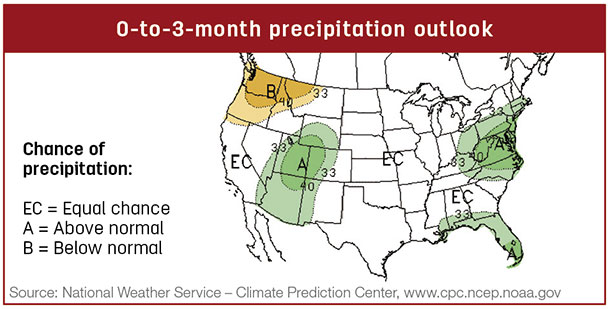However, drought has intensified in other areas, especially the panhandles of Texas and Oklahoma, and almost all of Kansas.
Those in drought areas should be working their drought management plan, and others should be thinking about their plan if dry conditions reoccur. No droughts are exactly the same, so the plans from previous droughts may need some modifying.
One big difference between this drought and the 2011 or 2012 droughts is the larger U.S. beef cow herd and the lower cattle prices.
In most droughts, early reductions in herd size are best from a financial standpoint. Extension fact sheets on herd reduction strategies can be found on animal science department websites at Kansas State, Oklahoma State and Texas A&M.
From a drought perspective, it is important to evaluate weaning options for spring-born calves. Weaning these 2- to 4-month-old calves will reduce feeding costs and save cow body condition. Nutrient requirements are significantly less for a dry cow than a lactating cow, which saves feed and money. Calves can be sold at this time or feed until they are bigger.
 Although their requirements have not decreased, they are very efficient to feed. It is important to work with a nutritionist to identify or develop a diet appropriate for these young calves.
Although their requirements have not decreased, they are very efficient to feed. It is important to work with a nutritionist to identify or develop a diet appropriate for these young calves.
Hay testing is especially important during a drought. Corn, sorghum, sudangrass, johnsongrass and other grasses can accumulate nitrates and should be checked.
Nitrate risk increases for grasses that are stressed and have been fertilized with nitrogen. Prussic acid can be a problem in grazing situations but is generally not a problem in hay.
An accurate estimate of total digestible nutrients and crude protein is important to prevent over- or underfeeding. During a drought, checking the ash content of forages is critical because levels are often increased from aggressive raking of hay crops, which adds soil to the bale.
I have seen levels as high as 35 percent ash, which greatly reduces the total digestible nutrient content and value of the hay.
Make sure to use a forage lab that includes ash content in the calculation of total digestible nutrients; unfortunately, many labs do not. ![]()

-
Jason Banta
- Associate Professor and Extension Beef Cattle Specialist
- Texas A&M University
- Email Jason Banta








